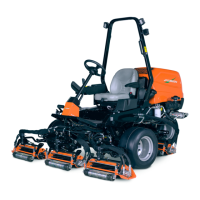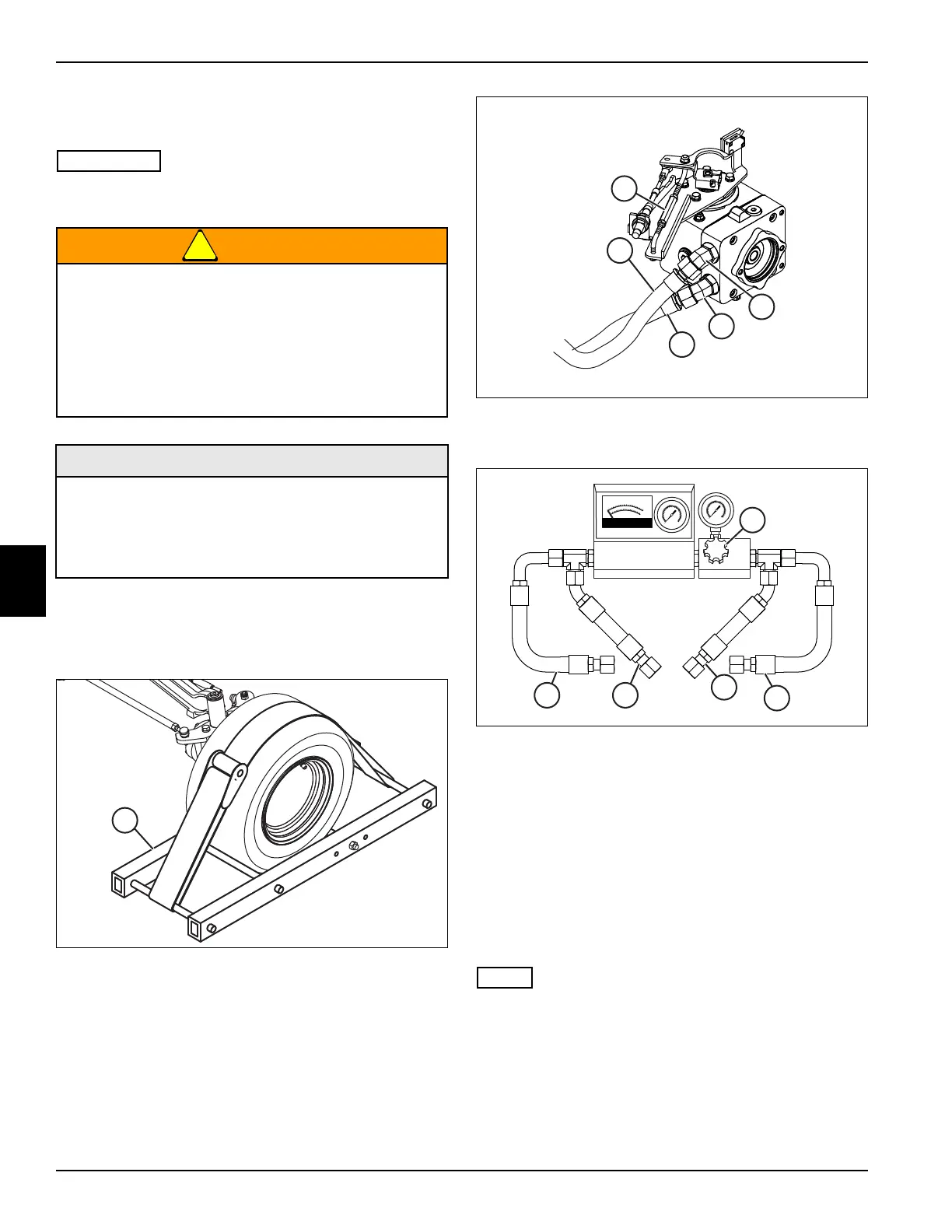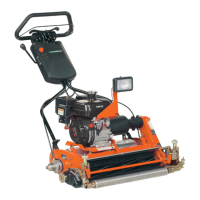5-28 673831-Rev A
HYDROSTATIC POWER TRAIN
5
Traction System Test
See Figures 5-21 through 5-23.
• This test determines if there is a problem within
the hydrostatic power train.
1. Park the mower safely. (See “Park Mower Safely” on
page 1-6.)
2. Raise the hood.
Figure 5-21
3. Install wheel restraint (1) to all wheels.
4. Close tow valve completely by turning clockwise.
Figure 5-22
5. Disconnect hoses (5 and 9).
Figure 5-23
6. Connect test hose (2) of flow meter inlet to fitting (3).
7. Connect test hose (4) of flow meter inlet to hose (5).
8. Connect test hose (6) of flow meter outlet to fitting
(7).
9. Connect test hose (8) of flow meter outlet to hose (9).
10. Open flow meter valve (10) completely before
starting engine.
11. Put the parking brake switch in the ON position.
12. Bypass seat switch.
Verify engine rpm is within specification (3000 rpm ± 50)
to ensure accurate hydraulic test results.
13. Start engine, release parking brake, and run at full
throttle (3000 rpm ± 50).
14. Adjust flow lock tool (1) to allow pump to produce 15
gpm (57 lpm) in the forward direction.
The hydraulic system is under pressure, and the
oil will be hot.
• Always relieve pressure in the hydraulic
system before performing service.
• Failure to follow appropriate safety
precautions may result in death or serious
injury.
Required Tools and Materials
• Flow Meter
• -12 ORFS Test Hose 6000 psi (413 bar)
• Flow Lock Tool
• Wheel Restraints
1
3
5
9
7
15
GPM
20
25
30
1
0
5
0
0
2
0
4
0
6
0
L
P
M
8
0
1
0
0
3000
psi
BAR
0
10
0
2
0
0
3
00
4
0
0
3
6
00
420
0
48
0
0
5
4
0
0
6
00
0
2
4
0
0
18
0
0
1
200
6
0
0
0
250
psi
BAR
0
5
1
0
1
5
2
0
25
3
0
3
5
3
00
350
4
00
4
5
0
50
0
2
0
0
1
50
1
00
5
0
0
2 4
6
10
8

